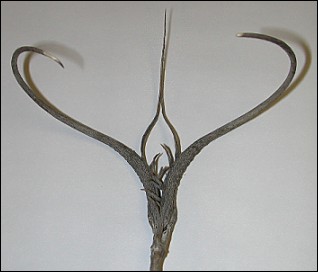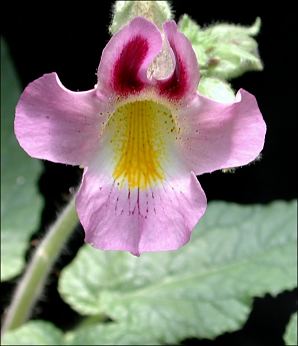
Early in the last century, the motorcar began replacing buggies as a mode of transportation. Some buggy manufacturers successfully switched over to building automobiles, but pity the poor buggy-whip people, whose niche disappeared entirely. Similar things happen in nature. Numerous cases occur where animals and plants relied on another organism, only to suffer disaster when it became extinct.
Botanists interested in function have long been puzzled by the plants known as devil's claws, widespread in our Chihuahuan Desert. The mature seedpod resembles claws ready to grab ahold of the lower leg of a large herbivore, thus to be carried away, spreading its seeds as it goes. But what mammal could this be? The legs of such creatures as pronghorns and deer are too thin to be grabbed.
Paleontologists to the rescue! Before the great extinctions some 11,000
years ago, horses were common and just the right size. Unlike buggy-whip makers, the
devil's claws managed to eke out a living until some 500 years ago, when Europeans
introduced horses and cattle and brought back their niche.
![]()
Contributor: Arthur H. Harris, Laboratory for Environmental Biology, Centennial Museum, University of Texas at El Paso.
Desert Diary is a joint production of the Centennial Museum and KTEP National Public Radio at the University of Texas at El Paso.


The pod of the devil's claw plant (left). The flowers of various species are showy and almost orchid-like, as seen above. Images by A.H. Harris.
Dimmitt, M. A. 2000. Pedaliaceae (sesame family) (the family Martyniaceae is included here). Pp. 249-250, in A natural history of the Sonoran Desert (S. J. Phillips and P. W. Comus, eds.). Arizona-Sonora Desert Museum Press, Tucson. 628 pp.